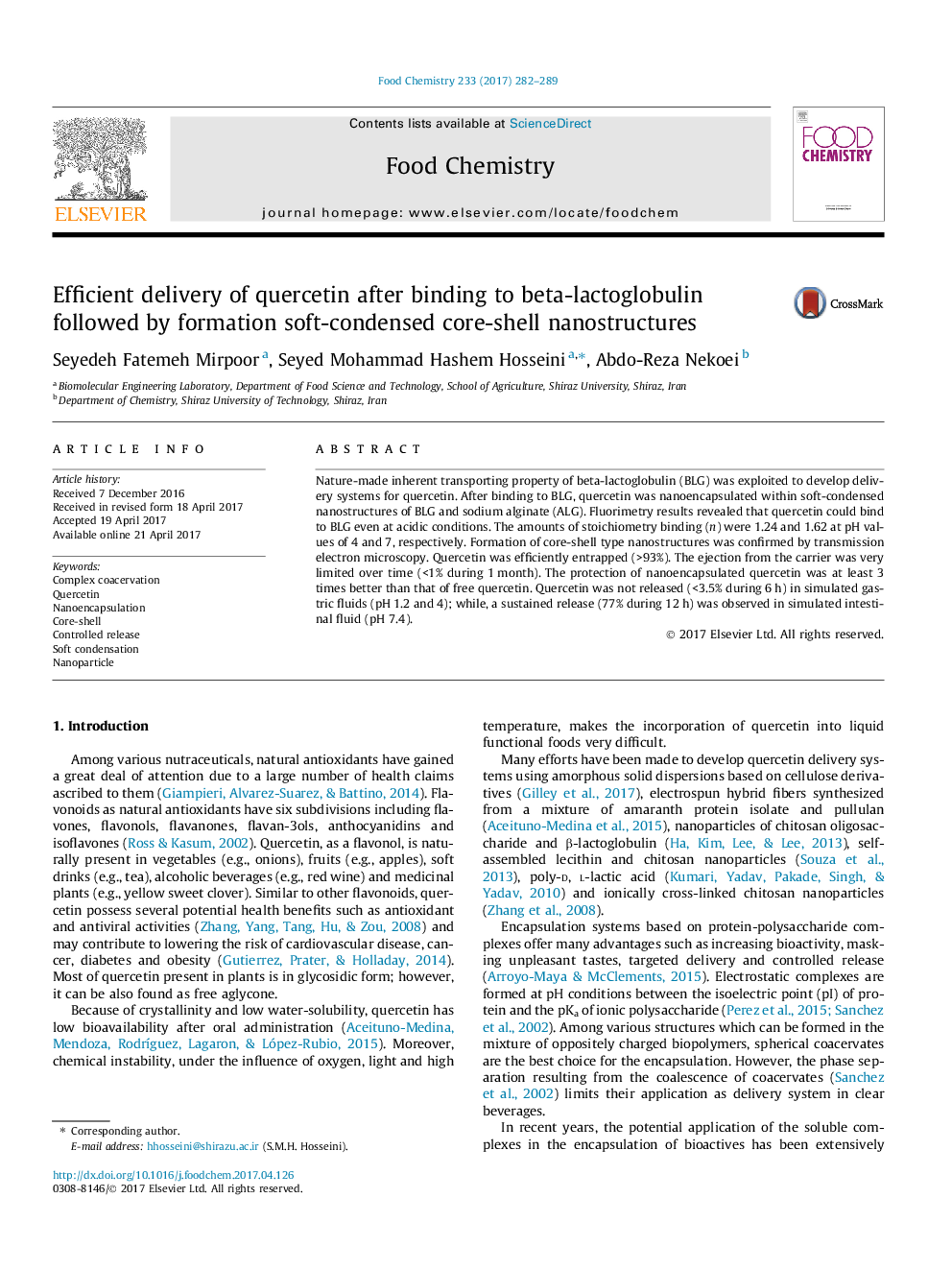| Article ID | Journal | Published Year | Pages | File Type |
|---|---|---|---|---|
| 5132826 | Food Chemistry | 2017 | 8 Pages |
â¢Sodium alginate/β-lactoglobulin interaction resulted in core-shell nanocarriers.â¢Quercetin was able to bind to β-lactoglobulin even at acidic conditions.â¢Enhanced protection of quercetin by electrostatic deposition of an alginate shell.â¢No release in simulated gastric and sustained-release in intestinal conditions.
Nature-made inherent transporting property of beta-lactoglobulin (BLG) was exploited to develop delivery systems for quercetin. After binding to BLG, quercetin was nanoencapsulated within soft-condensed nanostructures of BLG and sodium alginate (ALG). Fluorimetry results revealed that quercetin could bind to BLG even at acidic conditions. The amounts of stoichiometry binding (n) were 1.24 and 1.62 at pH values of 4 and 7, respectively. Formation of core-shell type nanostructures was confirmed by transmission electron microscopy. Quercetin was efficiently entrapped (>93%). The ejection from the carrier was very limited over time (<1% during 1Â month). The protection of nanoencapsulated quercetin was at least 3 times better than that of free quercetin. Quercetin was not released (<3.5% during 6Â h) in simulated gastric fluids (pH 1.2 and 4); while, a sustained release (77% during 12Â h) was observed in simulated intestinal fluid (pH 7.4).
